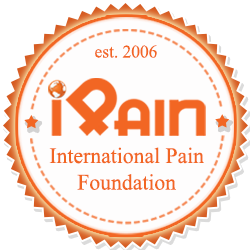The Presidential Commission to Make America Healthy Again (MAHA), established by President Donald Trump’s Executive Order on February 13, 2025, has unveiled a groundbreaking report titled Make Our Children Healthy Again: Assessment. Released just 98 days after the commission’s formation, the report identifies the root causes of the escalating childhood chronic disease crisis in the United States, spotlighting poor diet, environmental toxins, insufficient physical activity, chronic stress, and overmedicalization as key drivers.
Assessment
Additionally, mental health challenges are surging, with teenage depression rates nearly doubling from 2009 to 2019, and 3 million high school students considering suicide in 2023. Food allergy prevalence has also climbed by 88% between 1997 and 2018.
Root Causes
“We will end the childhood chronic disease crisis by attacking its root causes head-on—not just managing its symptoms,” said Secretary Kennedy. “We will follow the truth wherever it leads, uphold rigorous science, and drive bold policies that put the health, development, and future of every child first.” Kennedy expressed gratitude to President Trump for his leadership in entrusting him to chair the MAHA Commission.
The report emphasizes five primary contributors to the crisis:
-
Poor Diet: Nearly 70% of children’s calories come from ultra-processed foods high in sugars, chemical additives, and saturated fats, linked to obesity, type 2 diabetes, and nonalcoholic fatty liver disease. The shift away from whole foods is a significant factor.
-
Environmental Toxins: Children are exposed to over 40,000 chemicals through food, water, and air, with pesticides like glyphosate detected in 87% of tested children. These may pose risks to neurodevelopment and endocrine health.
-
Insufficient Physical Activity: A decline in outdoor play, coupled with nearly nine hours of daily screen time for teens, contributes to physical and mental health challenges.
-
Chronic Stress: Rising rates of depression, anxiety, and sleep deprivation among youth are exacerbated by social media and societal pressures.
-
Overmedicalization: The report questions the growth of the childhood vaccine schedule and the overuse of medications like antidepressants and ADHD stimulants, citing a 1,400% increase in adolescent antidepressant prescriptions between 1987 and 2014. It calls for more research into long-term impacts.
The report has sparked both support and scrutiny. Agricultural groups express concern over potential pesticide regulations, fearing economic impacts, while food activist Vani Hari hailed it as a “war on ultra-processed food and pesticide companies.” Critics, including Dr. Philip Landrigan of Boston College, argue the report overlooks socioeconomic factors like poverty and lacks a precise treatment plan, especially given proposed cuts to public health infrastructure. The report’s vaccine skepticism, a longtime focus of Kennedy’s, has also drawn criticism for suggesting unstudied links to chronic diseases without conclusive evidence.
U.S. Department of Agriculture Secretary Brooke Rollins emphasized agriculture’s role in solutions, stating, “America’s farmers and ranchers have created the world’s safest and most abundant food supply. We are working to ensure our kids consume the healthiest food we produce.” EPA Administrator Lee Zeldin added, “America’s childhood chronic disease crisis will be solved through innovation… ensuring we have the healthiest children.”
MAHA Commission
The MAHA Commission now has 82 days—until August 12, 2025—to deliver a Make Our Children Healthy Again Strategy based on these findings. Agencies like the National Institutes of Health, FDA, and Centers for Medicare & Medicaid Services will prioritize “gold-standard” research, overhaul GRAS (Generally Recognized as Safe) food ingredient oversight, and leverage AI for real-time health surveillance. The report also calls for addressing corporate influence in health policy, echoing Kennedy’s pharmaceutical and food industry lobbying critiques.
https://www.hhs.gov/press-room/maha-commission-childhood-chronic-disease-root-causes.html

